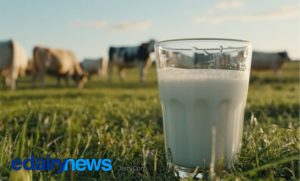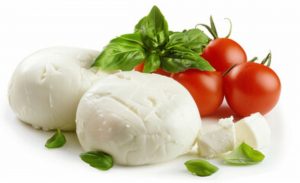This later turned to the question of how high milk prices would go. March Class III milk futures fell from a high of $18.03 on January 24th to a low of $10.26 on April 22nd for a decline of $7.77. June Class III futures reached a low of $10.68 on April 22nd and reached a high of $21.04 on July 1st which was a gain of $10.36 per cwt. September Class III futures reached a high of $21.71 on July 22nd and moved to a low of $14.95 as of last week. This is a decline of $6.76 per cwt. The volatility so far this year exceeds anything else on record. There are still four months remaining to the year. Following the swing pattern already seen this year, one could anticipated another swing higher by the end of the year.
Timing would be right for a rebound of prices as buyers look ahead to end of the year holiday demand. However, historically, the higher prices of the year are generally in September and October. This may not be the case this year. Buyers have been purchasing supply as prices have fallen over the past month allowing them to gain ownership of product without have to chase the market.
Demand will be difficult to predict as there is much uncertainty over demand from school accounts as schools and colleges may open and close and reopen again after periods of quarantine. This will keep suppliers of dairy products guessing as to how much to have on hand. The restaurant industry is another area of much uncertainty. It does seem like many have adapted and compensated, but overall revenue is reduced. This is projected to be lower potentially through much of 2021.
Another impact on availability of supply is the potential for exports to show as a result of the high prices for cheese for a few month. Prices moved so quickly on a tight supply of fresh cheese that pushed cheese over $1.00 per pound above world price. This may cause some slowing of exports in the coming months as international buyers held back on purchases. There had also been an increase of imports at that time which may also have more of an impact over the next few months.
If the market pattern of the year holds, we could expect a rebound of prices. A rebound would need to be supported by underlying cash in order to be sustained. Increasing milk production will keep sufficient supply for both bottling and manufacturing demand. A tipping of the balance between supply and demand will determine price direction.
Robin Schmahl is a commodity broker and owner of AgDairy LLC, a full-service commodity brokerage firm located in Elkhart Lake, Wisconsin. He can be reached at 877-256-3253 or through their website at www.agdairy.com.
The thoughts expressed and the basic data from which they are drawn are believed to be reliable but cannot be guaranteed. Any opinions expressed herein are subject to change without notice. Hypothetical or simulated performance results have certain inherent limitations. Simulated results do not represent actual trading. Simulated trading programs are subject to the benefit of hindsight. No representation is being made that any account will or is likely to achieve profits or losses similar to those shown. There is risk of loss in commodity trading may not be suitable for recipients of this publication. This material has been prepared by an employee or agent of AgDairy LLC and is in the nature of a solicitation. By accepting this communication, you acknowledge and agree that you are not, and will not rely solely on this communication for making trading decisions











